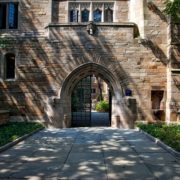In today’s competitive higher education market more schools are turning to online education to provide alternate revenue and growth. According to a recent poll from the National Center for Education Statistics, 25% of college and university students are taking some form of distance education courses. Colleges and universities often partner with third party entities, known as Online Program Managers, to cut overhead costs. OPMs are companies that design, run, and market online education programs for colleges and often receive a percentage of a student’s tuition in compensation. According to Online Report Card, this figure averages around 50%, and in some cases, is as high as 85%.
But why do non-profits turn to OPMs in the first place, thereby surrendering large amounts of tuition revenue? According to Inside Higher Education there are three basic reasons. Many schools have never tried distance learning in the first place, so they have a lot to learn. Some institutions do not have the internal expertise, whether it be the right people, systems, or technology. Lastly, most schools do not have the financial resources to sustain a program while supporting the necessary marketing effort. Though giving up high amounts of tuition revenue seems unappealing, most schools do not have a choice.
OPMs almost always operate on a tuition-splitting basis, but according to John Katzman, who opened one of the most successful OPMs in history, a new OPM model is taking hold. His company, Noodle Partners, uses a flat fee for services instead of tuition-sharing. Katzman says, “For a fee, we help schools assemble the tools, services, and tech to run great programs without taking money from students – it’s more flexible and transparent and wildly less expensive.”
According to Online Report Card, from 2013 to 2014, private not-for-profit institutions distance enrollments grew by 11.3%. For-profits saw enrollments drop by 2.8 %. An estimated 80% of online education programs are being outsourced to online program managers. According to research by Online Report Card, 85% of students who study at least partially online are at public schools and receive federal compensation. Millions of dollars in federal loans are being used to finance OPMs.
When the Obama administration decided to crack down on questionable for-profit market compensation, certain OPMs asked if tuition-sharing would still be allowed. The Department of Education agreed to continue to allow tuition sharing in public and nonprofit schools as a reaction to the notion that it had previously been allowed for for-profit schools. As a result, it now seems that nonprofit and public institutions are engaging in the same strategies that for-profits once used; aggressive, income driven marketing.
According to The Atlantic, Robert Shireman, a former Department of Education deputy in the Obama administration, believes that eventually public pressure and school leaders will bring change to the tuition-sharing process. John Katzman also believes in the transition, saying, “The only real question is, how quickly will the old revenue-sharing model die?”










